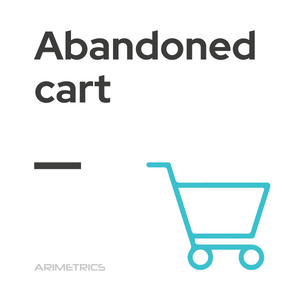
Definition:
Abandoned cart is a term used in digital marketing to refer to unfinished purchases in which customers add products to their virtual shopping cart but leave the website before completing the transaction. This concept is crucial, as understanding the causes of cart abandonment and knowing how to detect them can enable companies to significantly improve their business results.
Causes of basket abandonment
The abandonment of a virtual basket in the conversion funnel does not respond to a single reason, but to several factors that can trigger this event:
- Problems during the payment process: This can include rejection or failed validation of the payment method, as well as errors in the system processing the transaction. It is critical to pay attention to these problems, as they can have significant negative consequences for the business.
- Best Offers: Users may find similar products on other websites at lower prices during their search. This situation may lead them to interrupt their purchase in our e-commerce, indicating the need to review and adjust the prices of certain products.
- Bad experience: If during the navigation through our website the user experiences a negative situation such as a bad navigability, a slow web architecture or a badly established hierarchy, he/she may end up abandoning the purchase. unequivocal signal that we must optimize our website.
- Problems with shipping: Shipping options that do not meet the user’s expectations, such as unexpected shipping costs, long delivery times or inconvenient pick-up locations, can contribute to cart abandonment.
Strategies to reduce abandoned baskets
It is the task of digital marketing specialists to know how to identify these abandonments and correct them. To address the problem of basket abandonment, companies can implement several effective strategies. The following are some of the most relevant ones:
- Checkout Process Optimization: Simplifying the checkout process is critical, including reducing the number of steps required to complete a purchase and allowing for a variety of payment options, such as credit cards, PayPal and other digital payment platforms. In addition, implementing a guest checkout makes it easier for users to complete their purchase without creating an account, which can increase conversion rates.
- Transparency in Shipping Costs: Unexpected shipping costs are one of the main reasons for cart abandonment. Therefore, it is advisable to display shipping costs from the beginning of the checkout process, either on the product page or in the cart itself. Offering free shipping options or shipping discounts for orders over a certain amount can encourage users to complete their purchase.
- Improve User Experience: Performing usability testing helps to identify and correct problems in site navigation. Ensuring that the site architecture is intuitive and that products are easy to find is key. In addition, using a responsive design that adapts to mobile devices is essential, as an increasing number of users make purchases from their phones.
- Abandoned Basket Recovery: Implementing remarketing campaigns allows you to target users who have abandoned their baskets. This can include personalized social media and web ads that remind customers of the products they left behind. It is also effective to send abandoned cart recovery emails with a friendly reminder and, if possible, offer a discount or additional incentive to motivate users to complete their purchase.
- Personalized Offers and Recommendations: Using data analytics to offer personalized recommendations based on users’ browsing behavior and past purchases can increase the relevance of displayed products and encourage purchase completion. In addition, offering time-limited promotions creates a sense of urgency that can motivate customers to complete their purchase before the offer expires.
- Proactive Customer Support: Implementing a live chat or customer support system available during the checkout process allows users to resolve questions or issues in real time, which can reduce abandonment. Providing a clear and accessible FAQ section that addresses common concerns about the checkout process, shipping and returns is also beneficial.
- Analysis and Continuous Adjustment: Regularly tracking cart abandonment metrics and using web analytics tools to identify patterns and trends allows for real-time adjustments and continuous improvement of the shopping experience. Also, conducting surveys or soliciting feedback from users who abandon their baskets helps to better understand their reasons and adjust strategies accordingly.
